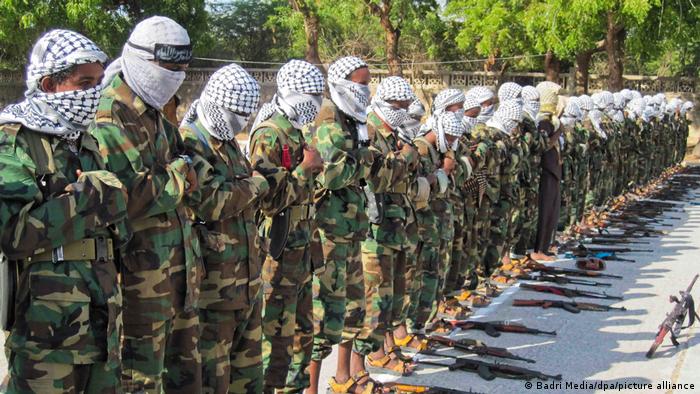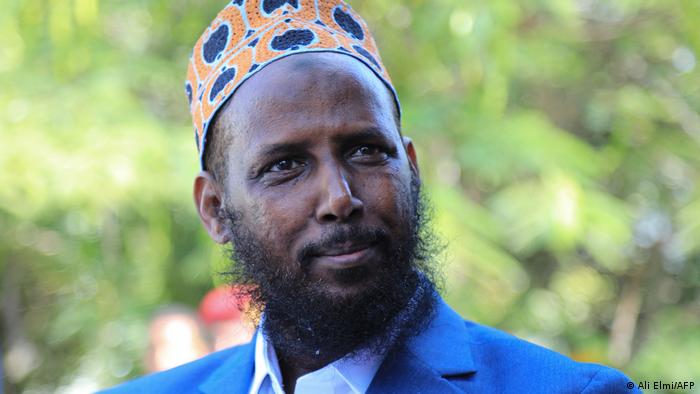Al-Shabab: Somalia's Islamist militant group
The recent hotel siege by al-Shabab, during which more than 20 people were killed, has spotlighted one of Africa's deadliest insurgencies. But who is the group? And what does it seek to achieve?
According to analysts, al-Ittihad al-Islami (AIAI, or "Unity of Islam"), a militant Salafi group, was the forerunner of al-Shabab and gave birth to many of its leaders back in the 1990s.
Al-Shabab, which means "the Youth," aims to establish a strict interpretation of Shariah law across Somalia. It has previously carried out public stoning and amputations of suspected adulterers and thieves. In addition, the group prohibits shaving of beards for men and has banned entertainment through music and movies.
A split within AIAI saw al-Shabab initially affiliate itself with the Islamic Courts Union (ICU) — a federation of regional and clan-based Islamic courts founded in southern Somalia in 2004 to bring order and stability after the collapse of Mohamed Siad Barre's government in 1991.
In June 2006, Al-Shabab and the ICU seized control of the capital, Mogadishu, fueling fears of a spillover into neighboring Ethiopia.
In December 2006, Ethiopia — a predominantly Christian Orthodox country — sent troops to Somalia and ousted the ICU to thwart the terror threat.
Al-Shabab's radicalization
Many analysts believe that Ethiopia's military intervention radicalized al-Shabab. However, Ethiopia's government claimed the operation was necessary and that the US and the African Union supported the mission.
Pushed south, al-Shabab took a more extreme ideological stance than the ICU, endorsing a fundamentalist version of Islam.
Between 2006-2008, al-Shabab recruited thousands of fighters to destabilize Somalia's Transitional Federal Government (TFG).
During this time, the insurgent group established ties with Osama bin Laden's al-Qaeda network.
Deadly ambushes
It began a bombing and attack campaign against Somalia's TFG and Ethiopian forces.
The group's indiscriminate attacks targeted civilians, journalists and international aid workers.
It also staged deadly ambushes on the African Union peacekeeping forces (AMISOM), which the UN Security Council authorized in February 2007.
The US killed two of al-Shabab's former leaders — Ahmed Abdi Godane in 2014 and Aden Hashi Farah Ayro in 2008— but their deaths have had little effect on the insurgency.
Al-Shabab leader Mukhtar Robow, also known as Abu Mansur, later defected from the group citing ideological differences. However, in 2022, Somalia appointed Robow as religion minister.
Designated a terrorist group
In February 2008, the US State Department labeled al-Shabab a foreign terrorist organization.
The leadership of al-Shabab officially pledged allegiance to al-Qaeda in 2012.
Al-Shabab launched its first attack outside of Somalia in 2010, killing 74 people in Uganda's capital, Kampala.
In 2013, the militant group claimed responsibility for an attack on a shopping mall in Nairobi, Kenya, that killed 67 people. In 2015, al-Shabab attacked students at a university in Garissa, killing 148 people.
Al Shabab regularly carries out attacks in Somalia despite being weakened by the counterterrorism efforts of the AU-led peacekeeping mission.
In October 2017, Mogadishu suffered one of its worst terrorist attacks when truck bombings killed more than 500 people. Authorities blamed al-Shabab though the group never claimed responsibility.
Sources of revenue
Experts say al-Shabab has profited from various revenue sources, including by extorting businesses, farmers and aid organizations.
Despite a UN ban on Somali charcoal exports since 2012, al-Shabab has built up a large racketeering operation, with checkpoint taxation on illicitly traded charcoal bringing in millions of dollars annually.
The group also makes money by smuggling contraband sugar across the Kenyan border.
According to the UN, al-Shabab spent more than $21 million (€21 million) in 2019 on fighters, weapons and intelligence, and the group enjoyed significant budgetary surpluses.
Edited by: Keith Walker






No comments:
Post a Comment